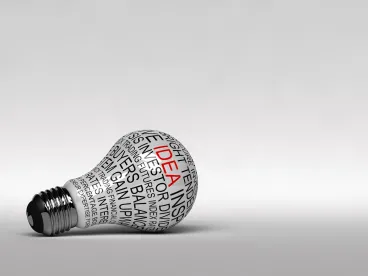The following telephone arguments will be available to the public live. Access information will be available by 9 AM ET each day of argument at: http://www.cafc.uscourts.gov/public-access-arguments.
Tuesday, August 3, 2021
Cybergenetics Corp. v. Institute of Envtl. Science, No. 21-1113
Cybergenetics accused the Institute of Environmental Science and Research (ESR) of infringing its patents relating to forensic analysis of DNA samples. DNA samples often contain multiple sources of DNA. The claimed methods purported to fix this “DNA mixture problem” by un-mixing, or “de-convoluting,” DNA mixtures according to genotypes. The methods include: amplifying the DNA mixture; generating quantitative genotype data to reflect the genotypes in the sample; and creating a probability distribution for comparison with the genotype of a suspect. ESR filed a motion to dismiss, arguing the claims are ineligible under 35 U.S.C. § 101. The district court found at Alice step one that the claims are directed to the abstract ideas of (1) mathematical algorithms, (2) using a generic computer to calculate the algorithms or display results, and (3) transforming a DNA sample into data. At Alice step two, the district court determined there is no inventive concept because the claims recite generic computer components and data processing steps that are well understood, routine, and conventional.
On appeal, Cybergenetics argues the district court erred at Alice step one because the claims are directed not to mathematical algorithms but to a “combination of physical, analytical, and forensic operations” that solve a problem in the field of DNA forensic analysis. Cybergenetics likens its patents to those found eligible in XY, LLC v. Trans Ova Genetics and Cardionet LLC v. Infobionic, Inc. where the claims were directed to the application of mathematics to improve a process. In particular, Cybergenetics highlights the “physical” step of amplifying a DNA sample and “forensic” step of comparing samples. Cybergenetics further argues the claimed methods satisfy Alice step two because they provide a solution that is computationally more practical. Alternatively, Cybergenetics argues the district court erred in deciding a § 101 issue at the pleadings stage and not construing the claims in the light most favorable to Cybergenetics.
ESR responds that the district court’s decision should be affirmed. According to ESR, the district court properly found at Alice step one that the claims are directed to the abstract ideas and at Alice step two that there is no inventive concept. In ESR’s view, deciding eligibility at the pleadings stage was proper because Cybergenetics expressly declined to propose any outcome-determinative claim constructions.
Thursday, August 5, 2021
Cajun Services Unlimited, LLC v. Benton Energy Service Company, No. 20-1997
Benton Energy (BESCO) designs and operates oilfield pipe running services. BESCO developed a system to offset suspended tubular goods during pipe installation and removal called BATTS that incorporated a hydraulic elevator called the “Tesco elevator.” BESCO then entered into a business relationship with Cajun under which Cajun would manufacture roller inserts (“Elevator Roller Insert System” or “ERIS”) for the Tesco elevator. While BESCO and Cajun disputed whether BESCO had rights in ERIS, Cajun sought and obtained U.S. Patent No. 9,988,826 on ERIS. BESCO ultimately obtained its roller inserts elsewhere.
BESCO filed suit against Cajun seeking a declaration that the ’826 patent was invalid, unenforceable, and/or not infringed. Cajun countersued alleging infringement. Following a jury trial, the court found Cajun owned all rights, titles, and interests in ERIS, the ’826 patent was valid and enforceable, and BESCO had infringed the ’826 patent under the doctrine of equivalents.
On appeal, BESCO argues it did not infringe the ’826 patent because the claims require two sets of rollers, and BESCO designed around the claims by modifying its Tesco elevator to replace the lower rollers with padding. BESCO argues the doctrine of equivalents does not apply because the padding is static and relies on the intrinsic qualities of the material, while the claimed lower rollers operate by spinning. In addition, BESCO argues the jury’s infringement finding must be vacated because the court improperly allowed lay expert testimony from a witness who had no experience in patent infringement and had never seen the operation of BATTS before trial.
Cajun responds that BESCO’s challenge to the jury’s finding of infringement under doctrine of equivalents is untimely because BESCO did not raise it until almost eight months after the verdict. The jury’s verdict should be affirmed, Cajun argues, because it was undisputed that BESCO designed around the ’826 patent and that BESCO’s padding performed its function and achieved its result in the same manner as Cajun’s lower rollers. Regarding the lay expert testimony, Cajun argues the jury had sufficient evidence to find infringement even without this testimony and, in any case, the witness was qualified because he had a degree in civil engineering, years of experience in the oil and gas field, and experience reviewing patent applications.
Thursday, August 5, 2021
Satco Products, Inc. v. Thread Group, Inc., No. 21-1141
Thread Group’s Registration No. 4890626 is for the mark THREAD. In 2013, Nest Labs (later Thread Group) applied for this mark, identifying the services to which the mark applied as “computer services, namely, providing an Internet site featuring technology facilitating wired and wireless communications among electronic and computer devices.” During prosecution, Nest assigned the application to Google, and Google sought an extension of time for filing the statement of use (“SOU”). Google subsequently transferred the application to Thread Group and the application issued as the ’626 Registration. Satco sought cancellation of the ’626 Registration at the TTAB, alleging there was nonuse of the THREAD mark during the period of use alleged by the application. In evaluating nonuse of the mark, the Board considered evidence of use of the mark as of the extended deadline for filing the SOU.
Satco appeals the Board’s decision, challenging the Board’s decision to extend the SOU deadline and its consideration of evidence of use as of the extended deadline for filing the SOU. Satco also appeals a finding by the Board of an implied license between Google and Thread Group by which Thread Group’s use of the mark inured to Google’s benefit.
Thread Group responds that Satco failed to meet its burden of proof to show nonuse of the THREAD mark in association with the identified services. Thread Group also argues the Board correctly ruled that TTAB properly used the extended deadline for filing the SOU as the relevant date to show nonuse of the mark. Finally, Thread Group defends the Board’s finding of the implied license between Google and Thread Group.




 />i
/>i
